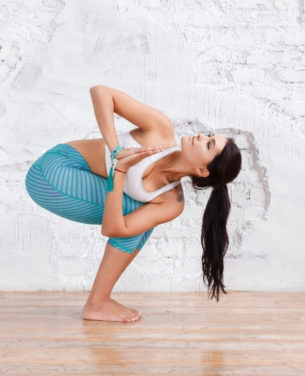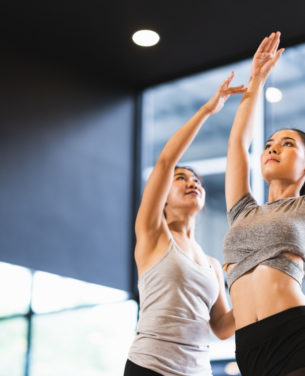Equilibrium
by Circuit
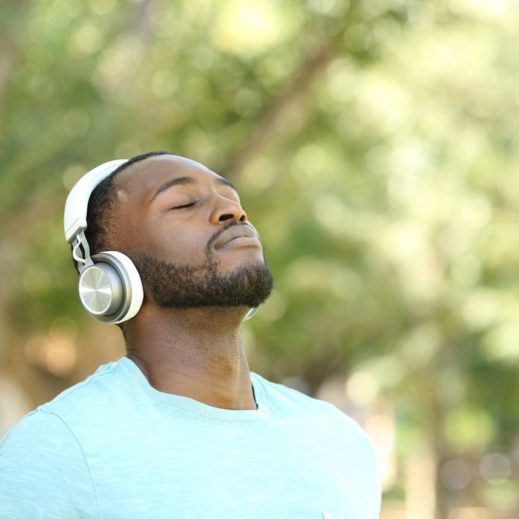
Trying a Meditation Class For The First Time? Here’s What You Might Expect.
12.11.2021
Meditation is growing in popularity with a reported 30 million people new to the scene in recent years. As part of our virtual amenity offerings, we currently feature a Midday Meditation class for communities, hosted by our Guided Meditation Instructor Jasmine Ben-Reuven. Her delivery of the meditation class encompasses a 45-minute mindful retreat, offering various relaxation techniques that promote a journey of healing. Participants are invited to go deep within, ease the entire body through breathing and pressure point alleviation techniques, and experience the ideal and perfectly serene place in nature.
Meditation Benefits
Did you know, Meditation not only improves anxiety, but also insomnia, PMS, and risks of hospitalization by coronary heart disease by 87%? The Mayo Clinic definition of meditation is that it is the practice of relaxing your mind and body. It has been shown to lower levels of anxiety, anger, depression and tension, and also promotes a decrease in depression by increasing serotonin and reducing cortisol levels.
As our Guided Meditation Instructor Jasmine Ben-Reuven explains in the introduction to our Midday Meditation virtual class, meditation is comparable to looking into a clear, calm lake, where you can see all the details and the reflections, but when it rains, it’s hard to see. The rain can be like life, interfering with your ability to see and think clearly, making it hard to focus, giving you constant distractions, and putting your mind on overload. Meditation can be a powerful tool to lessen anxiety and stress so you can see things more clearly and from a neutral perspective, lifting you to a state of peace.
There are many ways to achieve the wonderful benefits it has to offer, and our virtual Midday Meditation class includes 5 different techniques that offer a variety of gestures to experience all of them. Here’s what you could expect if you attended one of our virtual mediation classes led by our Guided Meditation Instructor Jasmine Ben-Reuven.
1. Face Yoga
Face yoga is the very first segment included in our Midday Meditation class. You might be surprised to learn that the face actually has 42 individual muscles, making it a great introduction as part of this class. Face yoga exercises involve subtle and easy movement of the muscles of the face by doing vowel sounds and coordinating facial movement with breath. Benefits of facial yoga include facial muscle toning to help keep your face lifted, natural anti-aging efforts that help smooth fine lines and wrinkles, reduction of the appearance of scars, and prevention of sagging and dropping through stimulation and blood circulation from the massage. The more immediate result is a healthy glow and reduced stress and tension in the face, as noted and recommended by Elsa Jungman, PhD, scientist and microbiome expert and facial Yoga specialist based out of San Francisco.
How to Try Face Yoga:
Popular facial exercises you can try include The Cheek Lifter, Cheek Sculpting, Eyebrow Lifter, Jaw and Neck Firming, and Temple Developer.

2. Right and Left Nostril Breathing
The next part of our Midday Meditation class involves right and left nostril breathing. While it may sound a little strange, this simple technique offers a myriad of amazing benefits to activate your parasympathetic nervous system and slow down your heart rate, lower your blood pressure, and promote relaxation. In addition, benefits extend to pressure alleviated for those who suffer with a deviated septum, sinus pressure, inadequate sleep, poor posture, toxin exposure, insufficient movement and trauma. It can also help sharpen focus and awareness, support healthy lung and respiratory function, increase vital capacity, and balance the nervous system.
How to Try Left & Right Nostril Breathing:
To try left and right nostril breathing, start in a comfortable and relaxed seated position, taking a few cycles of breath through the nose. Rest your thumb against your right nostril and apply pressure to close the airway while resting your left hand in a comfortable position on the floor or behind you. Then inhale through the left nostril while the right nostril is closed, pause at the top and hold your breath for about ten seconds or so, then release and switch your pinch to the left nostril as you begin to exhale slowly and deeply through the right nostril. Begin the process by inhaling on the right side slow and steady with the left nostril pinched, holding at the top, and then alternate and switch to exhale out of the left side with the right side pinched. Repeat the process several times on each side or as long as it takes to really feel relaxed. You can also alternatively, follow these similar steps from this technique here.
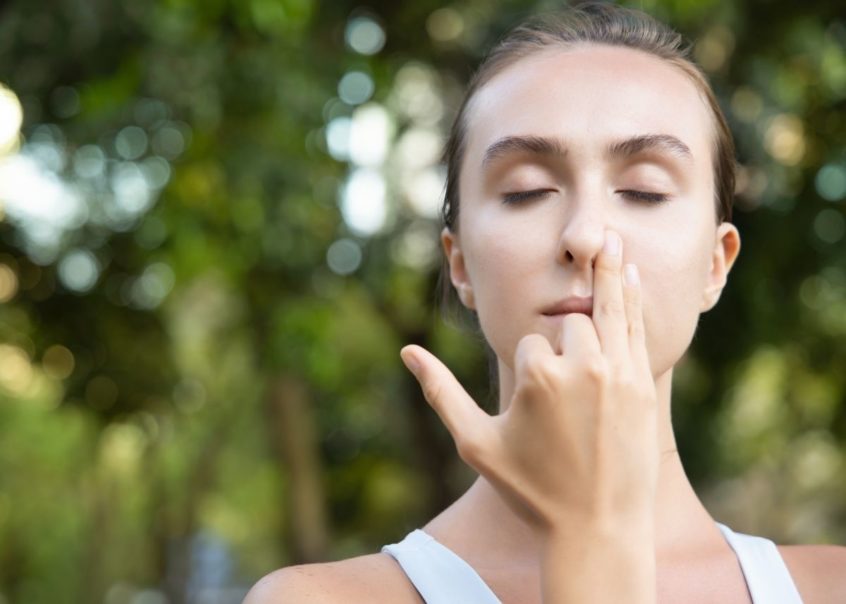
3. Emotional Frequency Technique
Also known as ‘ emotional tapping’ the emotional frequency technique is a sequence similar to the Chinese practice of acupuncture, but without the needles. The idea is that the cause of all negative emotions and sickness are due to a disruption in the body’s energy system and can be broken up through flowing movements designed to release blockages, help balance energy flow and maintain your health. This exercise promotes vitality, immune function, anxiety release, and balance.
How to Try the Emotional Frequency Technique:
The movement involves gently tapping key energy points, also known as meridian points of your body with the added option of repeating a mantra as you tap. Locations included in the tap include the Karate chop point, the crown of the head, the brows, temples, below the eyes, above the lips, the chin, collarbone, and the naval, many of these which also correspond to some of the major chakras of the body.
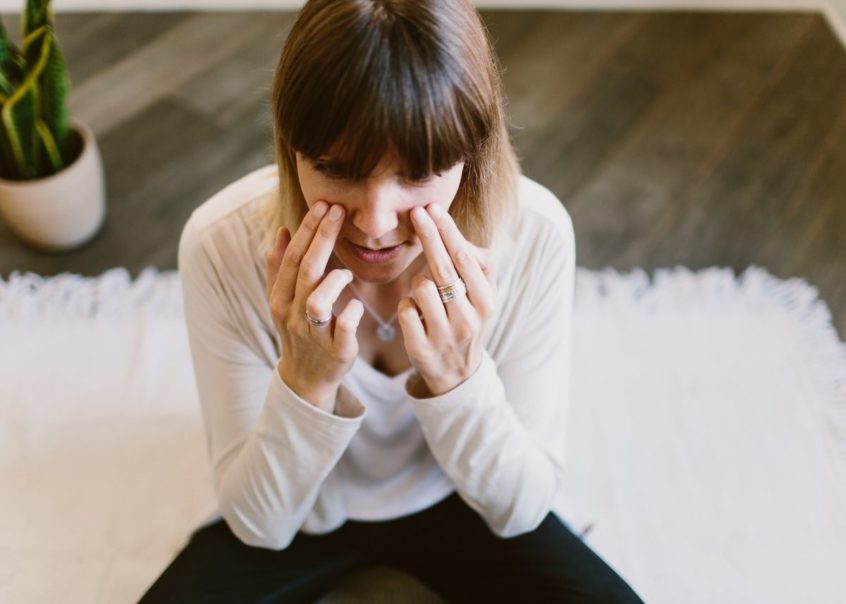
4. Gratitude Meditation
The gratitude meditation is the 4th part of our Midday Meditation class, and even by itself, this practice is an easy way to bring happiness and create harmony in your daily routine. For our class, our instructor walks us through a visualization of a place in nature we love, or one we’d love to imagine ourselves in. We imagine the sounds, sights, and smells of the place and are eventually guided to the imagery of to a chair made out just for us as we focus on a mantra of our choosing, or led by the instructor. There are endless alternate ways you can embrace a gratitude meditation including thinking of a fond memory, something that made you laugh, or focusing on the energy of love around the cherished people in your life. It’s truly a personal preference, but can be a wonderful way to open up your heart and your mind even further using mediation.
How to Try a Gratitude Meditation:
To do this pose, you just need to sit in an easy pose and get comfortable laying down or seated. Add a pillow if needed. You can have your own structure in mind while doing this practice, but it can also be really effective to have a guided meditation instructor walk you through it. Recommended practices include focusing on a place in nature you have been to or imagine, focusing on 5 things that you are grateful for, sending positive wishes to people in your mind, or simply focusing on the energy of gratitude as you slow your breath.

5. Seated Stretches With Breath
The final step in our Midday Meditation class is a seated stretch with breath. This exercise can be performed in many ways including diaphragmatic breathing, to lion’s breath, humming bee breathing, and many more, which promote many of the same benefits. Similarly to all the other exercises in this class, breathing exercises are effective at slowing down the parasympathetic nervous system to reduce blood pressure, slow down the heart rate, and calm our overall nerves. Best of all, it helps circulate fresh oxygen and air deeper into your lungs and increases awareness so that the next moment in your day or week that you begin feeling anxious or overwhelmed you can activate the same deep breathing techniques. Here is a very basic seated breathing stretch you can try:
How to Try a Seated Breathing Stretch:
In a comfortable seated position, start slowing your breath in and out of your nose. Count each inhalation and start to even the time length between your inhales and exhales. You can also opt to choose a short phrase or mantra to repeat during each inhale and exhale. You can add a slight pause at the top of the breath between your inhales and exhales if you feel comfortable doing so. Continue this practice for at least 5 minutes.

While each of these components of our meditation class can be a series of its own, you can enjoy all of these benefits of the combined movements simply from joining our one weekly virtual class. If you’re interested in programming like this that helps you engage your residents and impact communities by promoting a wellness-minded lifestyle, reach out to us today to get started.

